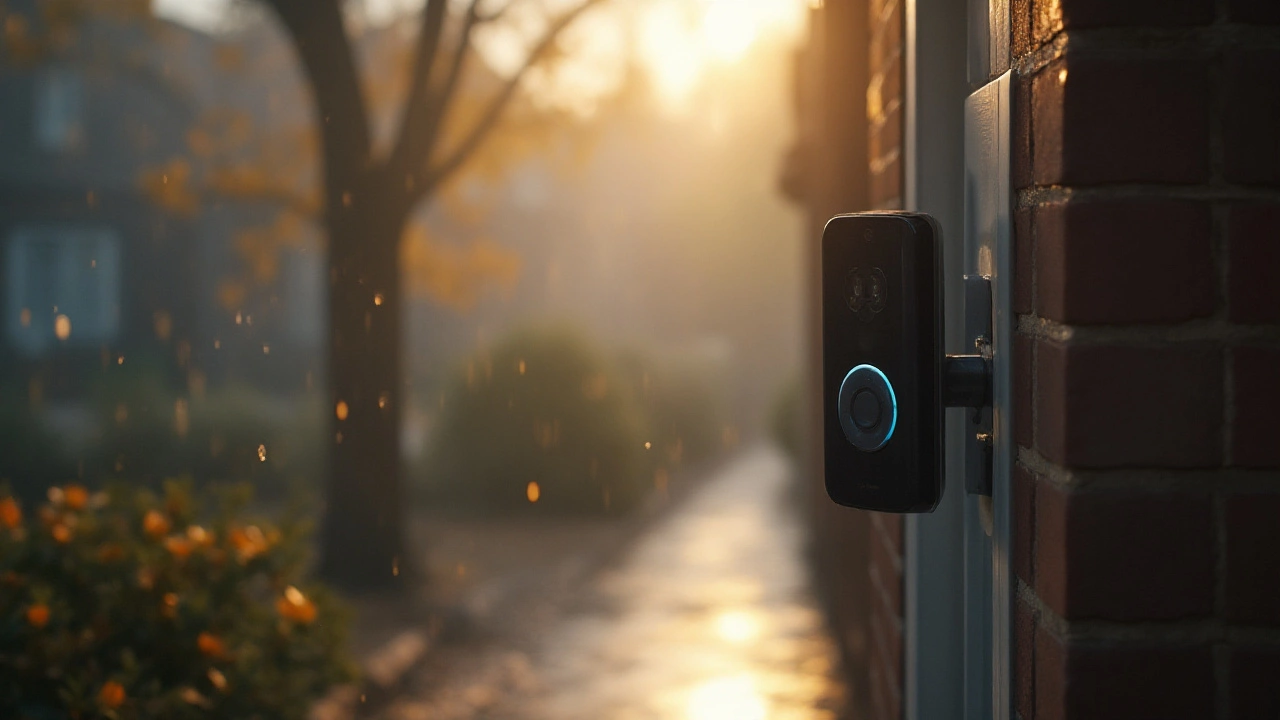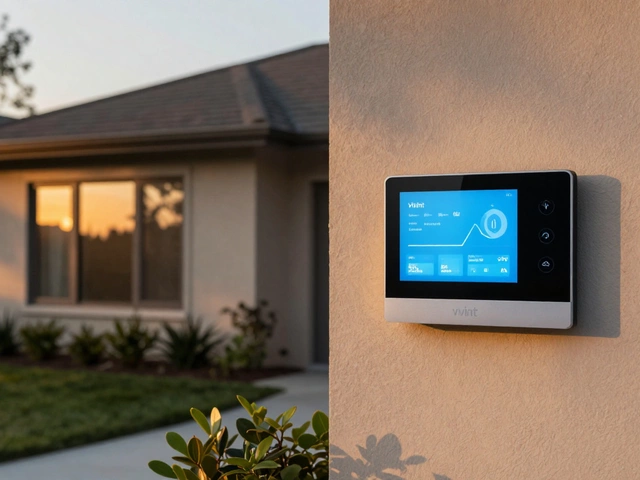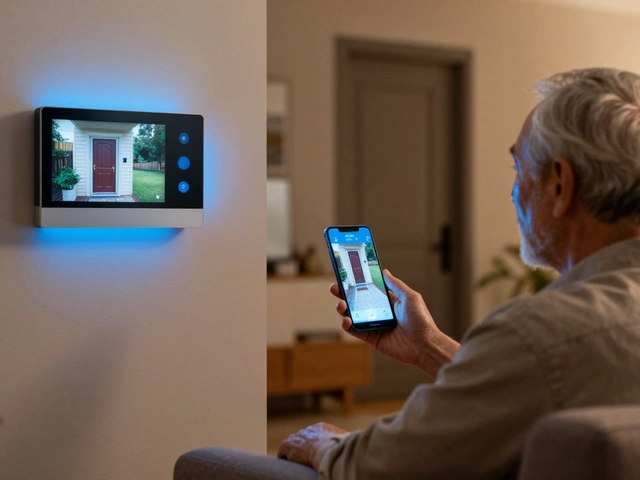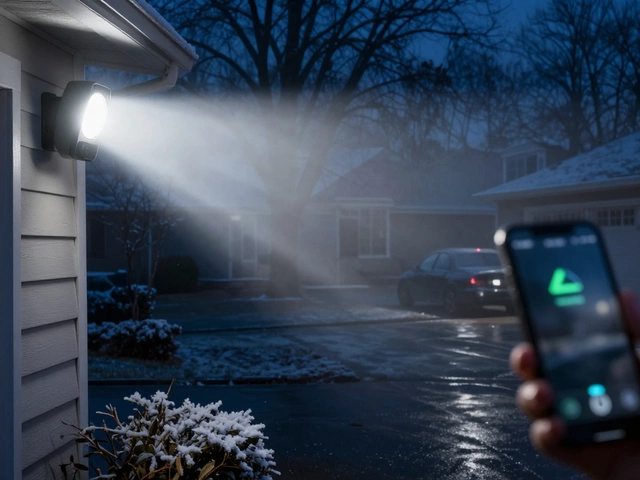The moment your front door rings unexpectedly, you want your Ring doorbell to be up, running, and recording. But there’s one question that throws a curveball into every conversation about these handy smart home guardians: how long does that little battery inside actually last? People throw out all kinds of answers, from two weeks to a year. Let’s break it down and slash through the guesses and myths. Some owners may swear they barely touch the charger, while others feel like swapping batteries is a weekly chore. Ever wondered why the difference is so huge? Let’s tackle what’s happening inside that battery, what’s really draining it, and how you can squeeze out a few more days—or maybe even weeks—between charges.
What Determines the Lifespan of a Ring Doorbell Battery?
The official line from Ring is pretty optimistic: up to six months on a single charge. But hold on—it’s not always that simple. Battery life can swing wildly based on several factors. If you live on a quiet street and rarely get visitors, your Ring might coast along for months. But if you’re right by a busy sidewalk or your kids constantly set it off (don’t forget the dog-walking neighbor!), you’ll see that indicator dip much sooner. Motion alerts, live view activations, night vision, extreme temperatures—these are the real battery vampires.
Let’s get specific. Each time your Ring sends a notification or records a video, it pulls a tiny bit of juice. Think of it like a phone screen turning on for every ping—it adds up fast. Cold weather can slow things down too. Lithium-ion batteries inside Ring doorbells don’t play nice with freezing temperatures. According to Ring, the battery could drain up to a third faster when it’s below 32°F (0°C). Conversely, sweltering heat can also trigger trouble, but not as dramatically as the cold. Got constant traffic or tons of wildlife action? Your Ring is going to be awake and working, not napping in standby mode, which means more power down the drain.
| Condition | Estimated Battery Life |
|---|---|
| Low Activity | 4–6 months |
| Moderate Activity | 2–3 months |
| Heavy Activity | 1–2 months |
| Extreme Cold Weather | 1–1.5 months |
| Constant Live View Use | 3 weeks–1 month |
Placement matters more than you might think. If your doorbell directly faces a street or a moving branch, you’ll get more false triggers and more battery drain. One clever Ring user on Reddit moved their device slightly toward the side, reducing daily alerts from 40+ to around 5, which took battery life from barely a month to nearly four months. Who knew a little twist could stretch your charge this far?
Here’s another little-known fact: Wi-Fi strength plays a sneaky role. If your Ring is struggling to maintain a connection, it works harder, quietly eating battery. Ring recommends placing your router within about 20 feet or using a mesh Wi-Fi system to get the best out of your device and your battery.
Now, the difference between Ring models is pretty significant. The standard Ring Video Doorbell (2nd Gen) has a built-in, non-removable battery, while higher-end options like the Video Doorbell 3, 4, and Battery Plus let you swap batteries for a fast turnaround. Removable batteries generally last a similar amount of time, but you save hassle by keeping a spare charged up and ready.
There’s some marketing hype, sure, but here’s a hard truth from a security industry analyst for PCMag, Jordan Minor:
“If your house is on a high-traffic street, don’t believe the ‘six months on a charge’ promise. Plan for a top-up every month or so, maybe sooner.”The doorbell doesn’t discriminate—it records what it sees, no matter what that is. If your kid’s basketball practice happens near the door, expect that battery to take a hit.
The upshot? Expect somewhere between 1 and 6 months between charges, with most people landing in the 2–3 month range, especially if you’re getting daily deliveries, visitors, squirrels, or a lot of passing cars. It’s not a defect; it’s how Ring is made to work. The good news is, you’ve got some control—keep the number of alerts down, optimize placement, check your Wi-Fi, and you’ll probably need to charge less often.

Charging, Replacing, and Upgrading: Getting the Most from Your Ring Battery
When it’s finally time to charge, the process is (mostly) painless. Removable batteries make life simple: Slide the faceplate off, press a lever, swap in your backup, plug the tired one into a micro-USB cable, and forget about it for a few hours. If you’re using a hardwired model or solar accessory, you might not even remember the last time you charged—it’s that hands-off. For folks who aren’t a fan of scraping frost off their car windshields, Ring’s quick-release battery packs are game changers. It’s even possible to buy a spare battery online; a lot of homeowners keep an extra one charged to make downtime a thing of the past. That way, when you see the Ring app ping with its 20% battery warning, you just swap and go.
How long does a Ring battery take to charge? Most batteries go from dead to full in around 5-10 hours, depending on the USB cable and charger quality. Standard USB wall adapters work best; plugging into a computer’s USB port can take way longer. There’s a reason: computers often put out less power than a wall socket. Want it to finish faster? Use a charger that gives at least 2.1 amps.
The Ring app makes things pretty easy. You can check your battery’s status anytime and get notifications when it drops to certain levels. You can even see a history of recent events to track down what’s draining your battery. Did the app say you used 70% in a week? Time to check motion sensitivity or tweak your detection zones. Speaking of which, dialing in your motion settings is the real secret sauce for squeezing out extra life. By shrinking your detection area or tweaking how sensitive it is, you’ll cut back on alerts that don’t matter—you know, like the neighbor’s cat doing nightly laps across your porch.
Solar chargers are worth a look, too, especially if you don’t want to get on a ladder twice a season. They’re not magic, though. You’ll need actual direct sunlight (cloudy or shady spots won’t cut it), and winter months with short days can leave you charging the old-fashioned way. Still, even partial sun can mean fewer battery swaps.
Thinking about upgrading? The Ring Video Doorbell Plus model offers a “quick release” battery and claims better battery performance. Some upgrades sport slightly bigger batteries and smarter detection, extending the time between charges. But don’t get caught up in numbers alone—if you live in a place with non-stop action, a more advanced Ring won’t change the laws of physics. Activity equals power drain, end of story.
What about replacement? All batteries wear down after several hundred charge cycles (think 300-500 full charges), so if you notice your battery going from months to weeks between charges, it may be time for a replacement pack. Ring sells originals, and third-party options exist, but your best bet is sticking to the real thing to avoid issues.
The easiest way to get more out of any Ring doorbell? Work the little things. Tighten up your detection zones to avoid the street, use the app to tweak alerts, check your Wi-Fi. Bonus tip: if you’re leaving town for a while, put the Ring into “Privacy Mode” to limit recordings. These little moves all add up.

Battery Myths, Interesting Facts, and Practical Tips for Ring Owners
All over Facebook, neighborhood forums, and YouTube comment threads, you’ll find a wild range of Ring battery stories. It’s easy to get lost in all the claims, but let’s set the record straight on what’s real and what’s not. First myth: charging the battery too often kills it fast. Not true. Modern lithium-ion batteries in all Ring models have built-in management chips that stop charging once they’re full, so you won’t fry them with a top-up.
Another misconception? That all Ring doorbells die quickly in the cold. While battery life does drop in low temps (any lithium battery does this), as soon as things warm up, most batteries bounce back to normal. If your doorbell skips out entirely in freezing conditions, try wrapping the bracket with a little bit of insulation, but don’t block the camera! For folks who live in Minnesota, investing in a solar charger or mounting the device a bit closer to the house (out of the wind) can add a few precious days to your battery window.
Did you know Ring keeps a battery health log in your app? If you want to get geeky, you can pull up stats on average discharge rate, events, and even spikes caused by software updates. Here’s a tip for minimal effort: set phone reminders for battery checks every 6–8 weeks if you’re in a medium zone. That way you’re never stuck with a dead doorbell when the big delivery finally shows up.
For folks running smart home systems, Ring’s battery doorbells can play nice with Alexa or Google, but keep in mind: any integration that wakes your doorbell from standby (like asking for a live feed) will eat at your charge. So, if you’re constantly pulling up the camera on your Echo Show, expect to charge up more frequently.
Want a quick reference on charging time, live view use, and weather effects? Here’s a table that gets to the point:
| Action | Expected Battery Impact |
|---|---|
| Using Live View Often | Up to 40% faster drain |
| Frequent Motion Alerts | Up to 60% decrease in total life |
| Winter Weather Below Freezing | Battery may lose 30–40% capacity |
| Severe Wi-Fi Dropouts | Battery drains up to 50% faster |
Don’t ignore those little clues from the app about battery health. If you spot a sudden jump in power use, check for things nearby: new holiday decorations, heat from porch lights, or even storms that may move branches in the detection zone. Sometimes the problem is simple. Adjusting your camera angle by an inch can outsmart most false triggers.
If you’ve got an older Ring model, you might see your battery life start to slip. That’s normal—every rechargeable battery wears down after a couple of years. Don’t wait for a total fail; swap in a new one once you notice the battery warning light showing up far more often. Replacement batteries can be ordered straight from Ring’s official site, and they don’t need any tools to install if you’ve got a quick-release mount.
Some people wonder if plugging in their Ring doorbell with a constant-power cable will “overcharge” the device. Truth is, you can’t really hurt it this way. The charging circuit inside Ring is smart—once it’s full, it just stops charging, even if it’s plugged in. So hardwiring your device (if you have wiring already in place) is a stress-free, long-term solution for people who don’t want to bother with the battery at all.
One last pointer: always charge your Ring battery indoors at room temperature. Charging outside in the cold or heat lowers the battery’s lifespan for the long haul. It’s just like charging your phone; middle-of-the-road temps are best.
So how long does a Ring doorbell battery really last? It depends on smart placement, weather, daily traffic, and how you use it, but with a little effort, most people can stretch that window into several months. The Ring doorbell battery life is one of the main selling points for these well-loved video doorbells, and with smart tweaks and a backup plan, you’ll stay powered up and covered, no matter what’s happening on your doorstep.






